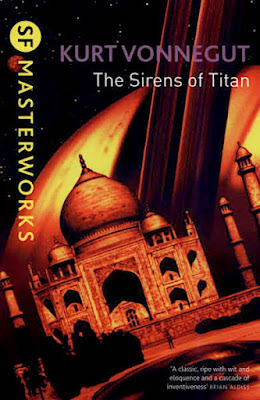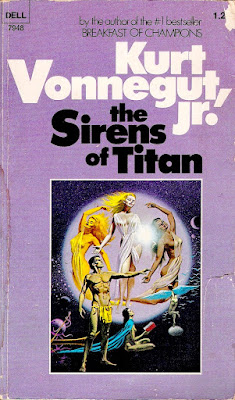THE LADY OF SHALOTT
Alfred Lord Tennyson’s “The Lady Of Shalott”
was my Mother’s favourite poem. Perhaps she
empathised with the predicament of a woman
confined, able to view the passing carnival of
life only through a lens? Is it a Feminist poem,
a poem of female empowerment?
Or just a romantic medieval fantasy?
Andrew Darlington re-reads the poem…
The first thing you notice about the Alfred Lord Tennyson poem “The Lady Of Shalott” is that it is written in a rhyming narrative form. Sometimes the simplest most obvious observations can be the most telling. The poem consists of a story. It tells a tale. Unlike the self-focused confessional poems with which we surround ourselves today, Tennyson himself is not a presence. Whatever it says about the twenty-four-year-old poet must remain informed guesswork for literary academics, to be intuited in tangential ways. And it rhymes. Not the rhyming-dictionary doggerel of Rap, where line-endings plunder thesaurus variations to exhaustion point. In fact, the rhyme is so virtually invisible it must be tracked to even appreciate its flow. The other thing about the poem is that it is beautiful. It needs no other justification.
Although Lord Byron and Percy Bysshe Shelley were early models, Tennyson was more cautiously gradualist than revolutionary. During a time of political turmoil he debated radical issues as part of the Trinity College Apostles undergrad group, showing support for the 1832 Reform Bill which extended democratic entitlements. With close friend Arthur Hallam – whose early death in 1933 inspired his “In Memoriam”, he took up the cause of Spanish revolutionaries and travelled to the Pyrenees in an unsuccessful mission to aid them, although the trip would yield the poem “Mariana In The South”. Even as a student, others were more impressed by Tennyson’s commanding physical presence and youthful literary achievements than by his degree of social involvements. Readers today, if they know him at all, are familiar with the bardic bearded image of the older Tennyson, by which time his views had become more conservative and patriotic.
His father – the Reverend George Clayton Tennyson, was a comfortably middle-class country clergyman, yet Alfred never harboured traditional religious views, and wrote ‘there lives more faith in honest doubt, believe me, than in half the creeds’ (in “In Memoriam”). Respected by Samuel Taylor Coleridge, his debut collection, ‘Poems, Chiefly Lyrical’ (1830) was nevertheless criticised for being cloyingly sentimental. It includes “Claribel”, the doomy narrative “Mariana” and the mythic Nordic “The Kraken”. Later, after his father’s death, Tennyson quit Cambridge without taking his degree, to live with his family in his father’s rectory. It was there he wrote the first version of “The Lady Of Shalott”, which was included in his poorly-received second volume ‘Poems’ (1833).
In an era of increasingly dirty industrial urbanisation there was a contrastingly strong escapist vision at large in the polluted air, a yearning towards some lost idyll of romantic chivalry that, in reality, had never existed. Folklore carved it out of the barbarism of post-Roman Britain and reinterpreted it through lavish literary invention. It was a gothic revival drawn – like a sword from a stone, by the 1816 republication of Malory’s 1634 ‘Le Mort d’Arthur’. “The Lady Of Shalott” itself is based loosely around Arthurian myths and legends. Here is a rich source material that Tennyson would continue to delve into in poems about ‘Galahad’ and ‘Sir Launcelot And Queen Guinevere’, as well as his epic cycle ‘Idylls Of The King’ (published 1859-1885). It paints visual imagery so strong that it urges painterly representation. To see William Holman Hunt’s 1888-1905 “The Lady Of Shalott” painting, as part of the Tate Britain Pre-Raphaelite exhibition, is truly breathtaking. The rich depth of colour, the storm of auburn hair in a wild haloing mane above her are employed in order to represent the freedom her ensorcellment denies.
This was my Mother’s favourite poem. She loved this poem. Perhaps she empathised with the predicament of a woman confined to her chamber, able to view the passing carnival of life only through a lens? So is it a Feminist poem, a poem of female empowerment? Is the Lady’s imprisonment a metaphor for the general repression of female aspirations that were particularly acute during the period in which the poem was written? And why is she supernaturally imprisoned in the tower in the first place, bewitched into weaving her ‘magic web of colours gay’? What occult power has she offended? The reader is not informed. ‘She knows not what the curse may be.’ Perhaps there is no message, other than the ones the reader chooses to impose?
The poem was revised for an 1842 edition – edited down from twenty to nineteen stanzas, and although this is the version most popularly read now, both texts have a unique flavour. The original makes greater use of an arcane and mannered vocabulary, as if to evoke a sense of deliberate antiquity. The latter has a more liquid flow. The ‘yellowleavèd waterlily, the greensheathèd daffoilly, tremble in the water chilly’ in the first version becomes ‘up and down the people go, gazing where the lilies blow, round an island there below, the island of Shalott’ in the second. The reaper ‘reaping late and early… piling the sheaves in furrows airy’ who whispers ‘tis the fairy Lady of Shalott,’ becomes ‘the heavy barges trail’d, by slow horses… skimming down to Camelot’ in the second. Both establish the rural image setting for the silent isle with its ‘four grey walls and four gray towers’ which ‘overlook a space of flowers’ – intact in both revisions, in which the Lady is ‘imbowered’. It is magical in every sense of that much-abused overused word. It is lavish and ornate, a poem written in light, because that is where its energies lie. It is romantic in the true sense of it being a romance, a flight of fancy, rich with imagery, ‘below the starry clusters bright, some bearded meteor, trailing light.’
Unnamed in the poem, the Lady is supposedly adapted from the Elayne of Ascolat who died of unrequited love for Lancelot of the Lake, as told by various thirteenth-century French and Italian romances, including ‘La Damigella Di Scalot’ as well as in Sir Tomas Malory’s work. Yet Tennyson weaves a sorcery of his own magical elements into the tale. She sits alone endlessly weaving at her loom, confined to her tower, watching the outside procession only as ‘shadows of the world’ that go by in her mirror. She weaves tapestries of a world she sees only in reflection, and delights in creating her solitary art. Until she sees bold Lancelot reflected in her lens, his ‘bridle glitter’d free, like to some branch of stars we see, hung in the golden galaxy,’ with his helmet and helmet-feather ‘burn’d like one burning flame together,’ his saddle-leather shining as though ‘thick-jewell’d’. Orphaned child of royalty, raised by the same water-spirits who will later retrieve Excalibur, Lancelot – the grail-quester whose adulterous love for Guinevere will eventually bring the entire Camelot idyll crashing down, is the epitome of the chivalrous ideal. And the flash of his visage on her crystal mirror, singing ‘Tirra lirra’ as he rides, is the trigger that releases her.
She is essentially a passive presence. Her one act of willed self-determination is the one that also destroys her. And yet she’s aware of the consequences of her defiance. The poem’s most oftly quoted line ‘the mirror crack’d from side to side’ – picked up by Agatha Christie to title her 1962 Miss Marple novel, is the warning that tells her ‘the curse is come upon me.’ Yet the curse has not been randomly invoked, she has consciously taken the decision that will trigger it. ‘She left the web, she left the loom, she made three paces thro’ the room.’ She has summoned that fate down upon herself. So is it a Feminist poem, a poem of female empowerment? In the sense that to choose to die in freedom is preferable to live on enduring enslavement. To act for the moment, irrespective of the price to be paid.

Unlike the self-focused confessional poems with which we surround ourselves today, this poem consists of a story, it tells a tale. That renders it open to interpretation. Some have seen it as a metaphor for the essential isolation and solitary nature of the artist, distanced from the world. Another sees it as an allegory for the process of growing up, exchanging the world of illusion for the harder realities of adulthood, for a life that consists of fancy must be corrosive, even in the comfort of dreams. They must be cast away, despite the penalty to be paid. This was my Mother’s favourite poem. She loved this poem. She saw the message in a more literal way. A woman lives her life within the limits decided for her, imposed upon her by social pressures. If she breaks the rules, she pays a terrible price. I don’t know for sure. I don’t know how far she rationalised it. But she had transgressed the rules by birthing an illegitimate child – me, it was her one act of willed self-determination. And on a day-to-day basis she struggled through the repercussions. She sat alone as I slept. She read this poem.
She read the lines that describe the Lady’s limited moments of willed liberation as ‘down she came and found a boat, beneath a willow left afloat, and round the prow she wrote, The Lady Of Shalott.’ She climbs into the boat robed in white. Singing her last song she leaves her island of isolation. The slow current carries her down towards the distant fairy-tale spires of ‘tower’d Camelot.’ As she glides, the curse takes hold and her blood freezes. Her eyes darken, her gleaming shape floats by trees and buildings, dead-pale on her death-barge. Until, out upon the wharfs of Camelot, her body is discovered. Death has a Gothic romantic appeal, emphasised as the final drama of a doomed love. In this fully-rounded narrative poem it also serves the logical purpose of drawing the tale to a satisfying conclusion. There’s an argument that at the time the poem was conceived, death was more a fellow-travelling part of life than it is now. That we are more distanced, more desensitised to its absolute finality. But death is always a traumatic irruption into life, no matter how impervious we feel ourselves to be. No-one is immune.
In Camelot, as the knights cross themselves for fear, Lancelot, the Lady’s unrequited love, crouches beside her and muses ‘she has a lovely face; god in his mercy lend her grace, The Lady Of Shalott,’ bringing the poem to a tragic close. Yet the poem goes on. The Lady ghost-walks across time into our present dilemmas.
It is beautiful. It need be no more. That is all the justification it needs.






















